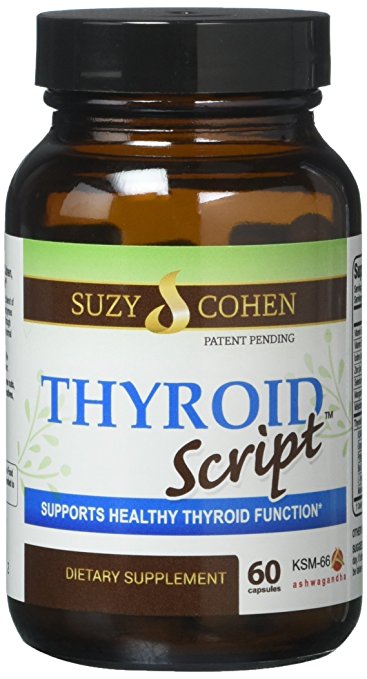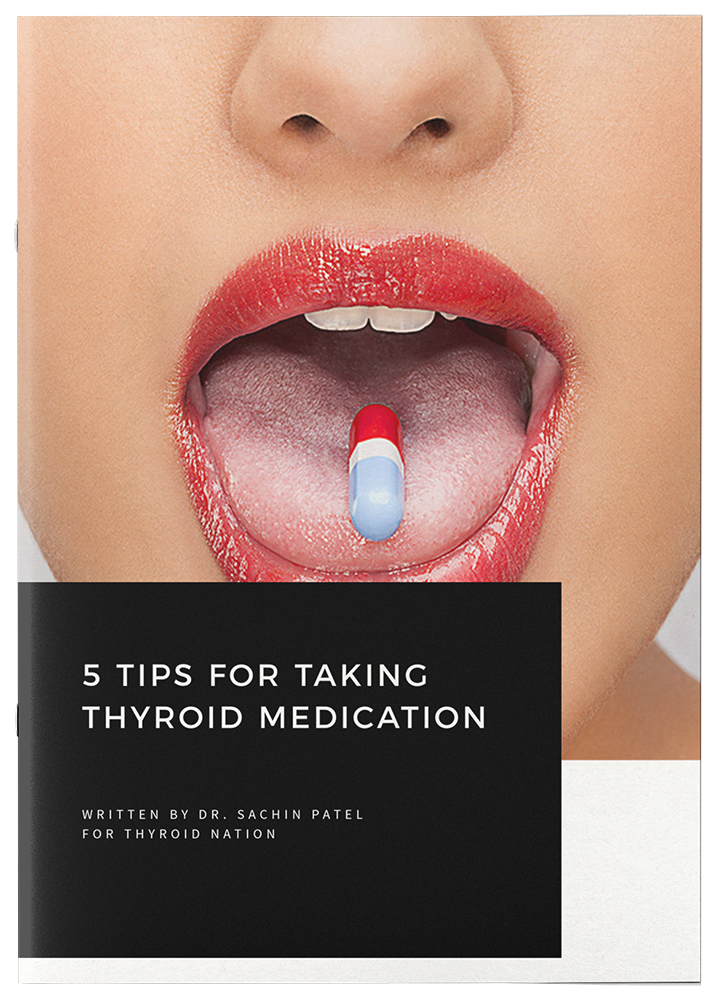
Lexi Haverly, Guest
Thyroid Nation
Hashimoto’s Disease And Flares
For those of you that have read my ‘about me,’ you know my main diagnosis is Hashimoto’s Disease. Although once my body fully crashed and my TSH was above 150, it was only a couple of months before I got my final diagnosis – I suspect autoimmune had been brewing inside of me for at least several years before, for at least five that I’ve had ongoing unexplained symptoms and before that I had minor symptoms for I don’t even remember how long!
My recent flare that lasted a little more than a month and reminded me why I went AIP and the life I’ve been able to escape by changing my lifestyle is what inspired this post. I had honestly forgotten how awful I used to feel – although my husband told me I was way more functional during this flare in comparison to how I felt at my worst before being diagnosed. Crazy!
Some Flare Symptoms
One of the most frequent questions people ask me – “What is a flare? What does it feel like?” The easiest description I can say is “imagine having the flu for weeks and not knowing when the end will come.” However, we all know it’s more than that. Flares vary for everyone, but this is a little summary of symptoms of what a flare is like for me:
- Fatigue: feeling so exhausted all day, yet unable to sleep at night – at least not well
- Insomnia: having a hard time falling asleep (taking an hour or two of laying down in the dark with eyes closed) and waking up several times throughout the night and lying awake with eyes closed for hours – contributing factor to the fatigue I’m sure!
- Achy: the whole body aches kind of like the flu, but more-so muscle oriented. Imagine being woken up from a hurting body or finding it difficult to do simple tasks like squeezing a lemon. Exercise during a flare is pretty much out of question because it hurts enough to exist.
- Digestive Distress: constipation, diarrhea, nausea, bloating, gas all alternate.
- Mental Fog: It feels like a daze is over me and I’m functioning on “low” to get things done. This is when I do dumb things like leave the oven on, leave the stove burning, and melt the cover lid in the microwave when starting the microwave for 6 minutes instead of the timer. I don’t trust myself with important things during flares and keep important activities to a minimum. I make it a point to double-check things in the kitchen several times throughout the day.
- Headache: most days begin by waking up with a headache that lingers all-day
- Limbs Fall Asleep: I’m not sure how it relates, but I’ve noticed my arms and legs constantly “going to sleep” during flares – especially at night. This is not a norm for me.
- Dizziness: usually associated with low blood pressure and frequently triggered by heat (yes, even a hot shower)
- Depression & Anxiety: I’m not sure if this one is the “chicken or the egg” here, but I really have to stay mindful and keep things in perspective during flares.
- Puffiness: this is mostly obvious around my eyes, but I feel like my skin is inflamed for most of the flare.
By definition, “A flare is a measurable increase in disease activity in one or more organ systems involving new or worse clinical signs and symptoms and/or lab measurements.”
Going To The Doctor
So the biggest truth about any autoimmune disease is the fact that we have to be in control of our healing process – this is by far my favorite quote to describe that:
I honestly HATE going to the doctor because I feel like I most frequently end up paying money to be told “to ride it out” or “nothing can be done at this time” – which is SUPER frustrating. Even this time, after about 3 weeks of feeling yucky, I decided to go to the doctor to see if there was something underlying going on and they only tested my thyroid (which all values were perfect, best they’ve ever been) and they said there’s nothing else they can do and to come in if I feel even worse. Yes, having perfect, stable thyroid numbers is great – but it makes me wonder what my body was upset at (apparently my doctor was not curious). Well, at 3 weeks of being sick and non-functioning, I took matters into my own hands. 2 weeks later, I’m functional again!
“What is a flare? What does it feel like?” The easiest description I can say is “imagine having one of those Click To TweetSome Tips To Follow When Going Through An Autoimmune Flare
So what do I do to heal during and after a flare?
- Prioritize: I basically operate on the spoon theory. If you haven’t read it, it’s a really good explanation of how someone with autoimmune (particularly in a flare in my case) has to live. It’s a great explanation to give to friends & family! During this time, I remove all I can from my calendar and work my way through the rest. Many home tasks get put off until I feel better. I do the bare minimum to keep the household running.
- Rest: If my body wants a nap, a nap is what I’ll give it. If I can’t sleep at night, I might as well get a little rest during the day. I’ve tried resisting naps, but I end up staying useless during the day and still not sleeping at night – so not worth it. If I get a midday nap in, sometimes I can get some things done around the house (it’s like gaining an extra spoon or two!).
- Nutrient-dense: Since I’m not fit to do much in the kitchen during this time, I opt to make large batches of nutrient-dense goodness – and soup is my go to with some healing bone broth! I also eat a lot of salad greens (easiest meal prep ever!) and meat patties with sweet potatoes. Yes, I end up eating the same thing for many days at a time – but I know there are no mystery ingredients sneaking in! I also do more cooking in my Instant Pot and Crock-pot to minimize time in the kitchen and may buy more items that are pre-chopped, etc. Most importantly, I go 100% back to AIP to maximize the nutrient density in food and make sure I’m not accidentally eating something “bad.”
- Soaking: I enjoy disconnecting from technology every few days and taking a nice, warm magnesium bath to clear my head and relax. It also helps the muscle aches! I also enjoy sipping on a detox smoothie packed with collagen & greens during my bath as seen above.
- Ask for help and decline extra to-dos: This is one I’m not accustomed to doing on a regular basis, but during this time if I need help – I ask for it! Likewise, if someone wants me to do something and I don’t feel like it’ll help my health in any way, I kindly decline (I’m normally awful about saying no to people!). I know what’s best for me and the more I take care of myself today – the sooner I’ll be back to “normal.”
- Start early: This is one I’m not good about, because I’m a do-it-all type of person and like to go-go-go all the time. If you feel a flare coming on, it’s best to NOT ignore it and begin all of these remedies. Your recovery will be much quicker and your body will thank you. If you delay, there’s a good chance of the flare being much worse and long-lasting. This round, I took the latter approach and it was not fun.
- Go easy on exercise: I pretty much completely don’t exercise because it’s enough of a challenge to keep up with the daily housework – but even if you do feel up for exercise, don’t over-push yourself as exercise can trigger an inflammatory response in some people. Listen to your body.
We are ALL unique and special. Make sure to always LOVE yourself.
About the Author
 Lexi Haverly writes the blog All You Can Eat To Better Health. The blog is about learning to regain your health while eating “without limits!” She focuses on the AIP Paleo (autoimmune protocol) diet and has posts about making the protocol easier, recipes, and how she manages to travel. Be sure to check out her blog and follow her on Facebook and Instagram. The original article can be found here.
Lexi Haverly writes the blog All You Can Eat To Better Health. The blog is about learning to regain your health while eating “without limits!” She focuses on the AIP Paleo (autoimmune protocol) diet and has posts about making the protocol easier, recipes, and how she manages to travel. Be sure to check out her blog and follow her on Facebook and Instagram. The original article can be found here.




This is GREAT advice, and you have SO described me!!! I am unable to take thyroid meds for some odd reason–I have severe side effects. So I quit the meds and started doing most of what you advise on my own. In particular, I seriously cleaned up my diet–not fully AIP, but paleo with limited dairy (yogurt and half and half in my morning coffee–gotta have some pleasure in life), and I made a serious effort to get more sleep.
I have to work (self-employed) but I cut back on my workload and learned to say, “NO”. My house is a disaster because I simply can’t do the things I used to do. I hate it, but I have learned to live with it so I can feel better and actually function, even in a limited capacity.
I have added some supplements that are supposed to support thyroid and adrenal health.
Truly, after 2-3 weeks, I feel MARKEDLY better! Completely well? No, unfortunately. But better enough that I CAN function most days. I have a really bad habit of overdoing it, so when I do, I just listen to my body and take it easy until it passes.
I hate going to the doctor too. I’ve spent thousands, with no answers whatsoever, except that I need to see a psychiatrist. *sigh* No one wants to address autoimmunity and root causes. If ever somebody does this, they could become a bazillionaire!
Just diagnosed with Hashimoto’s last week due to high TPO antibodies. Can anybody give me any tips on how to relax when having this? Pulse rate is crazy and my anxiety is through the roof because I feel like I’m going to die… doctor doesn’t seem to get that even though my levels are normal the antibodies are making me feel this way